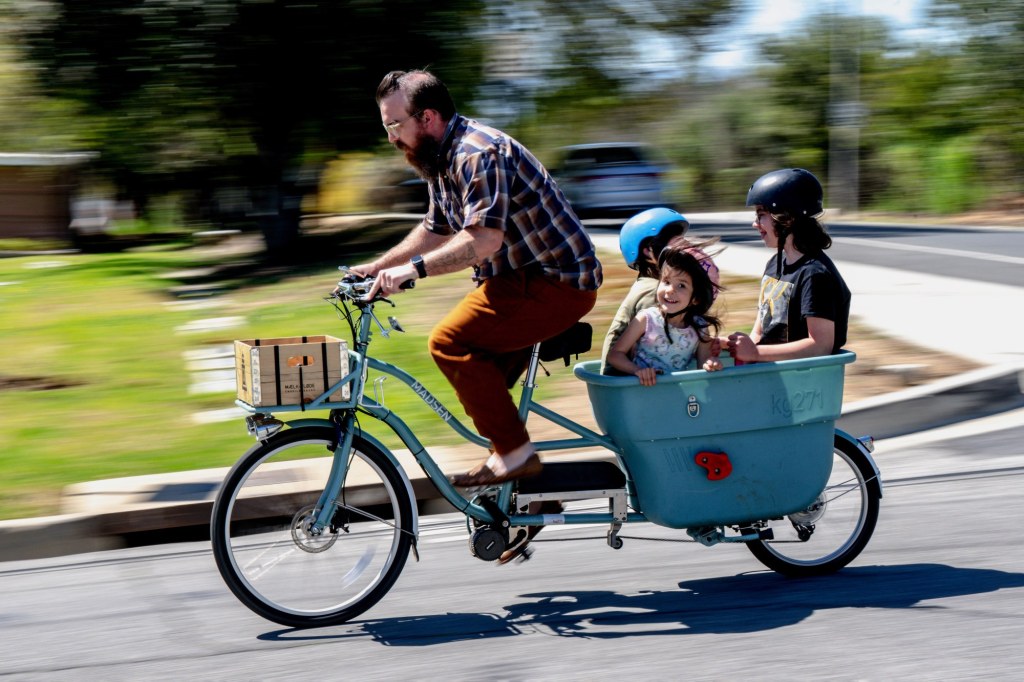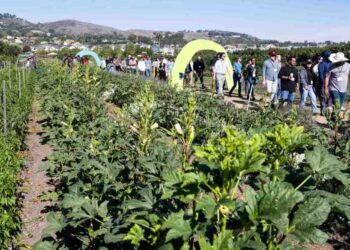Daniel Jester traded in his Toyota Tacoma three years ago for an electric bike.
But even as a full-time bicyclist, the 37-year-old hasn’t sworn off boulevards and avenues for trails and parks. Instead, he uses his electric bike, or e-bike, as he would a car to make his way around Riverside, where he lives and is a parks and recreation commissioner for the city.
He now counts himself among the thousands of e-bikers across Southern California, joining a groundswell that has prompted changes in law and lifestyles.
The father of four, who had concerns about carbon emissions and car expenses, said he knows the switch may sound impractical at first rub in car-dominated Southern California, but it isn’t a radical impediment to daily life. He still does Trader Joe’s runs and makes office commutes — albeit at a max of 20 mph.
The switch does require extra route planning to account for bike-lane sizes and traffic flow, and making left turns at major intersections can be difficult.
“The more that I do it, the more other people might see it’s something they can do,” Jester said. “I genuinely enjoy running a mundane errand like (getting) groceries, because the bike makes it more fun provided you can find a way to do it really safely. … I just don’t see a future where we can sustain everybody having their own cars. For that reason, I have to accept the risks.”
After two knee replacements, Dorothy Perkio said an e-bike made it easier for her to return to bicycling. The 60-year-old joined the Riverside Electric Light Parade, a local group of riders who don festive lighting on their cycles, and regularly bikes more than five miles.
“I hadn’t ridden a bike in 30 years and am thrilled to be able to ride again,” she said.
E-bikes come in three classes, with two having top-end speeds of 20 mph under state law. A third can hit 28 mph but can’t be ridden by anyone under age 16, said Sgt. Mike Woodruff, a spokesman for the Orange County Sheriff’s…
Read the full article here






